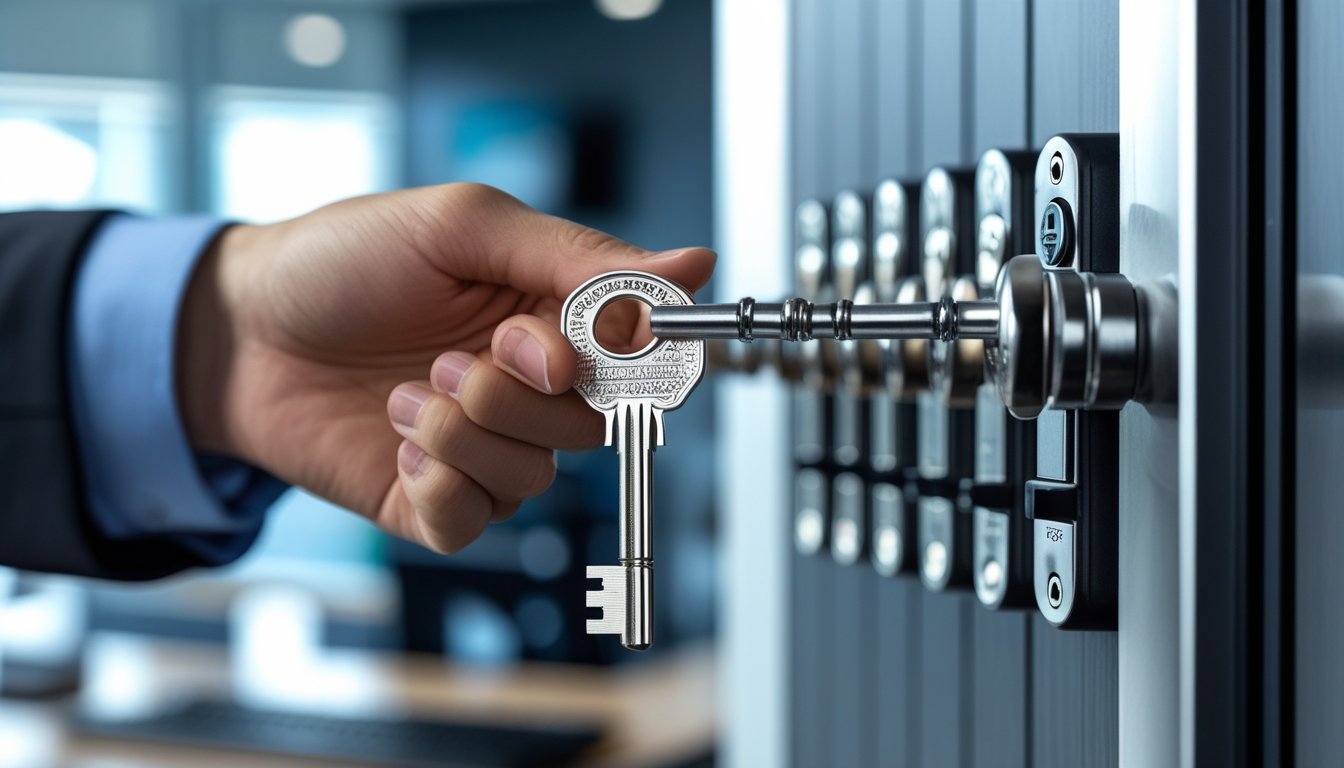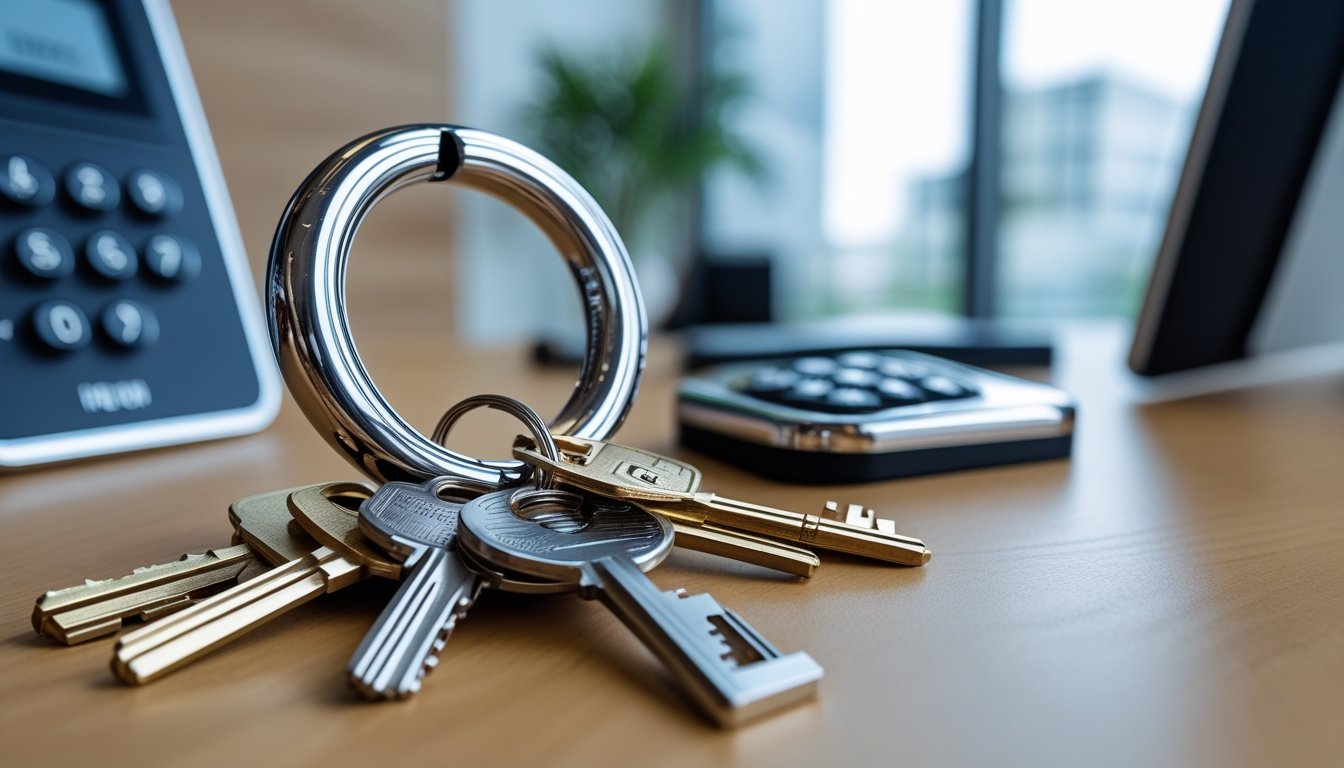Late updated: 25 Aug 2025 11:08
Written by: Elena Prescott
Understanding Master Key Systems And Their Benefits: An Expert Overview
Unlocking the potential of master key systems can revolutionise access control for both businesses and homes. These systems allow varying levels of access, enabling property managers, security personnel, and even family members to manage entry efficiently and securely. A master key system not only offers heightened security but also provides unrivalled convenience, empowering users to manage multiple locks with ease.

Imagine a security solution that combines flexibility, control, and efficiency. By offering tailored access to different areas, a master key system enhances the security of sensitive locations while maintaining smooth operation. Whether employed in a commercial setting or at home, these systems provide a robust mechanism to ensure only authorised individuals gain entry, safeguarding our interests.
Key Takeaways
- Master key systems enhance security and convenience.
- They allow tailored access control for users.
- Practical for both homes and businesses.
Understanding Master Key Systems
In the world of security and access management, the master key system offers efficient and secure solutions to manage who enters specific areas. Our discussion here delves into its fundamental concept, key types, and operational mechanisms. We'll also explore how these systems streamline access while enhancing security in communal and large-scale environments.
Definition of Master Key Systems
A master key system is designed to provide individual access control within a broader security framework. It includes a set of keys and corresponding locks that allow various users differing levels of access. At the core, it empowers property managers to decide who gains entry to different locations, rooms, or facilities while ensuring convenience and security.
Key components include the master key, which can unlock multiple locks within the system, and the individual keys, known as change keys, which open specific locks. These components make managing large properties like office buildings or educational institutions more efficient. For facility managers, this means fewer keys to manage and a more organised way to handle access permissions.
Hierarchy and Key Types
The hierarchy within a master key system typically involves several levels of keys, each designed to grant specific access permissions. At the pinnacle is the Grand Master Key, which opens all locks across all tiers. Just below it, we have the Master Key, which operates locks within its assigned group or section.
Further down, we encounter the Change Key or Individual Key, unlocking only its designated lock. This hierarchy allows for flexible but secure access control, ensuring that the right people have the right level of access. We can tailor these systems to fit complex organisational structures and varied security needs.
How Master Keys and Locks Operate
Master keys and their locks function through a combination of precision-cut pins inside the lock cylinder. Each lock is designed with specific pins that align when the appropriate key is inserted. The master key contains special cuts that activate the mechanism of multiple locks, thanks to shared pinsets that respond to it.
This system enables easy reconfiguration and adaptation of access control, adding layers of security. Regular locks might require rekeying or replacement when changing access needs, but master key systems allow swift adjustments without extensive hardware changes. This adaptability not only enhances operational efficiency but also protects vital areas from unauthorised access.
Key Benefits and Security Advantages

Master key systems offer significant advantages in both access control and security. By understanding these benefits, businesses can make informed decisions to improve their facilities' management and protection.
Enhanced Access Control
Master key systems provide a tailored solution for managing access to various areas within a facility. By allowing different levels of access to designated individuals, these systems ensure that only authorised personnel can enter sensitive areas. This control is achieved through a hierarchical key structure. Each employee receives a key that grants access based on their role.
The ability to limit access enhances security while maintaining convenience. For instance, a manager might have a master key granting access to multiple departments. In contrast, an employee's key might only open specific areas related to their duties.
Cost Efficiency and Convenience
Implementing a master key system streamlines key management, reducing the need for multiple keys and simplifying the handling process. This approach can be particularly useful in large organisations or facilities where managing numerous keys would be inefficient and costly.
The cost savings extend to maintenance and rekeying expenses. With master key systems, rekeying a building isn't required when a single key is lost or a lock changes. This reduces operational costs and minimises disruptions.
Additionally, using a master key system saves time. Employees no longer need to carry a bulky keychain or waste time looking for the right key. This boosts productivity and simplifies daily operations.
Security Improvements
Master key systems enhance security by offering precise control over who has access to each area. In emergencies, having a master key available ensures quick and organised responses without delay or confusion over which keys fit which locks.
Furthermore, these systems often incorporate advanced locking mechanisms that increase resistance to picking or breaking. The hierarchical design of master key systems allows comprehensive oversight, aiding audits and ensuring compliance with security policies.
The ability to easily manage and update access permissions also strengthens overall facility security. By using master key systems, organisations can maintain high security levels while ensuring ease of access where necessary.
Frequently Asked Questions

In understanding master key systems, it's crucial to explore how they function in secure environments, distinguish between key types, and recognise regional restrictions. Additionally, we delve into sub-master keys, the structure of key charts, and the benefits offered to commercial facilities.
How do master key systems operate in secure environments?
Master key systems function by allowing a single key to open numerous locks, each of which can still be accessed by its own individual key. Within secure environments, this provides a nuanced level of entry control that accommodates multiple security needs without compromising overall safety.
What are the distinctions between a grand master key and a master key?
A master key can open all the locks within its designated series. A grand master key, however, offers broader access, capable of opening multiple master key series. This hierarchical structuring is particularly useful in larger complexes where varied access levels are essential.
Why have some regions restricted the use of master key systems?
Certain areas place restrictions on master key systems due to security concerns; if a master key is lost or duplicated, many areas become vulnerable. These regions may require strict regulations for key duplication and heightened security measures to mitigate associated risks.
What is a sub-master key and in which scenarios is it used?
A sub-master key operates similarly to a master key but within a smaller subset of locks. It's practical in scenarios where access needs to be granted to specific areas, such as departmental divisions within a large office, without giving full access to the entire facility.
Can you delineate the structure of a grand master key chart?
A grand master key chart is a detailed representation of a keying system hierarchy. It maps out various levels of keys, illustrating how each key relates to others. This chart is essential for managing complex security systems and ensuring that access control is maintained.
What security advantages do master key systems provide to commercial facilities?
Commercial facilities benefit from master key systems by streamlining key management and enhancing security. These systems reduce the number of keys needed and simplify key control. With tailored access levels, they provide protection against unauthorised entry while promoting operational efficiency.
